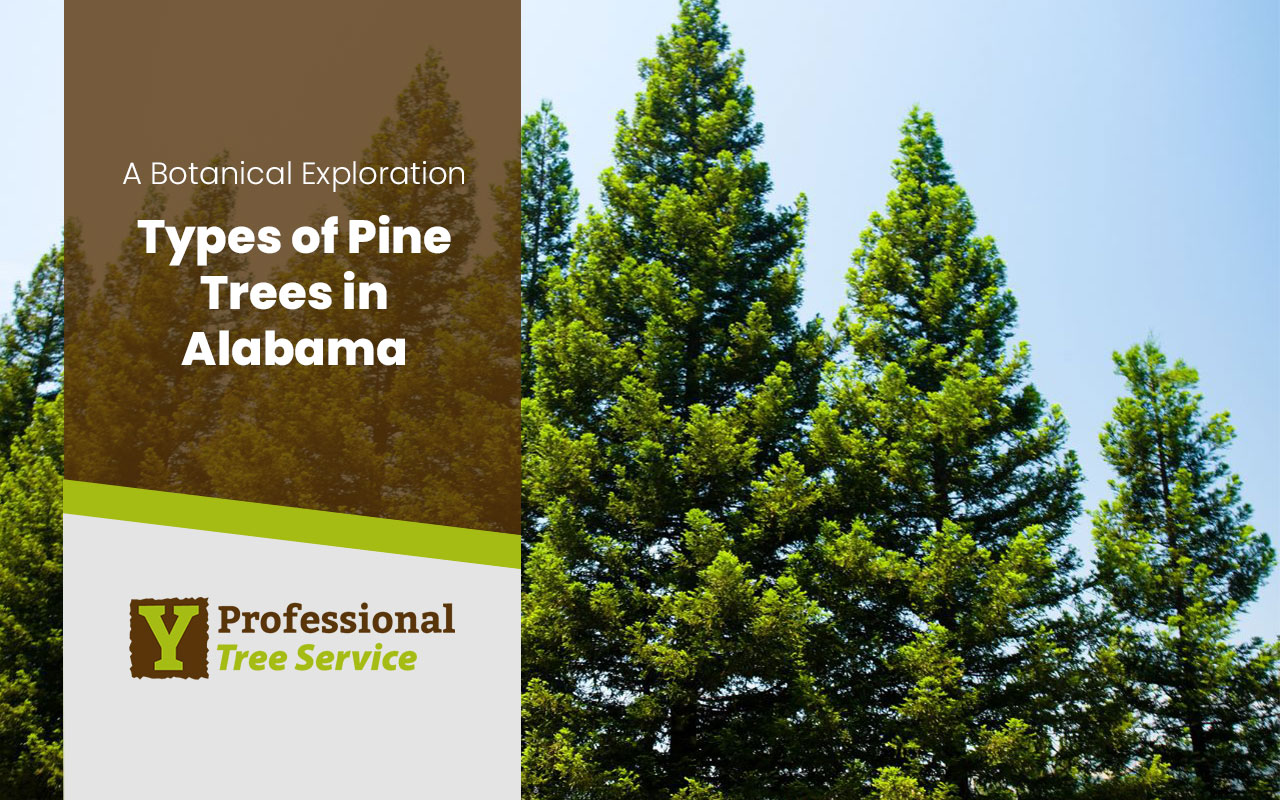
Alabama’s landscape is dotted with a wide variety of pine trees, which adds to the state’s natural beauty. We have a deep regard for the environment that we live in. Today, we’ll examine the numerous pine tree species that grow on Alabama’s soil. Understanding the types of pine trees in Alabama strengthens our connection to nature and provides helpful information for landscaping decisions.
Types of Pine Trees in Alabama
The geography of Alabama is ideal for multiple kinds of pine trees, each with its distinct qualities. These trees are vital to the state’s natural diversity, providing various aesthetic and environmental benefits.
The Longleaf Pine (Pinus palustris), known for its towering height and long needles, is one of Alabama’s most renowned species. The Longleaf Pine, typically found on coastal plains and sandy soils, contributes significantly to Alabama’s ecological balance.
The Loblolly Pine (Pinus taeda) rises tall in highland areas, with its straight trunk and shorter needles, prospering in various soils and significantly impacting Alabama’s forestry.
Longleaf Pine (Pinus palustris): Guardian of the Plains
The Longleaf Pine is a well-known Southern species, reaching heights of up to 100 feet. This pine type is distinguished by its long needles, which range from 8 to 18 inches.
Habitat
Longleaf Pines prefer well-drained sandy soils and are prevalent in Alabama’s coastal plains. Their environment has been modified by adaptability to regular fires, which promotes the growth of grasses beneath their vast canopy.
Conservation Importance
Longleaf Pines, once numerous, have declined due to logging and land-use changes. Longleaf Pine forests are being restored as part of ongoing conservation efforts emphasizing their ecological importance.
Loblolly Pine (Pinus taeda): Majestic Giants of Upland Regions
Loblolly pines dominate upland locations in Alabama, with straight trunks and shorter needles. These colossal trees can grow 90 feet tall, providing a deep and robust forest cover.
Habitat
Loblolly Pines thrive in Alabama’s upland regions, adapting to varied soils and playing an essential role in the state’s vibrant forestry. Because of their quick development, they are economically valuable for timber production.
Economic Importance
Loblolly Pines contribute greatly to Alabama’s timber sector, sustaining the local economy while providing habitat for various wildlife.
Insights, Facts, and Common Queries About Pine Trees in Alabama

Landscaping Tips with Pine Trees
- When planning landscaping projects, consider the individual needs of each pine species.
- Plant native pine trees to boost biodiversity and local ecosystems.
Fascinating Facts
- Alabama has over six natural species of pine trees, each with unique characteristics.
- Pine trees play an important role in Alabama’s timber sector, supporting local economies and environmental conservation.
Common Questions
Q: Is it possible to cultivate pine trees in my backyard?
A: Many pine tree types are appropriate for home landscaping, providing shade while improving visual appeal.
Q: How do pine trees help to avoid soil erosion?
A: The large root systems of pine trees, particularly Longleaf Pines, aid in the binding of soil particles, lowering the risk of erosion.
Y Professional Tree Service: Your Partner in Sustainable Landscaping
As we conclude our investigation of the various varieties of pine trees in Alabama, Y Professional Tree Service stays devoted to assisting you with your landscaping projects. Our commitment goes beyond.
Contact us so that we can work together to create environmentally mindful and artistically appealing venues that honor Alabama’s natural history.
